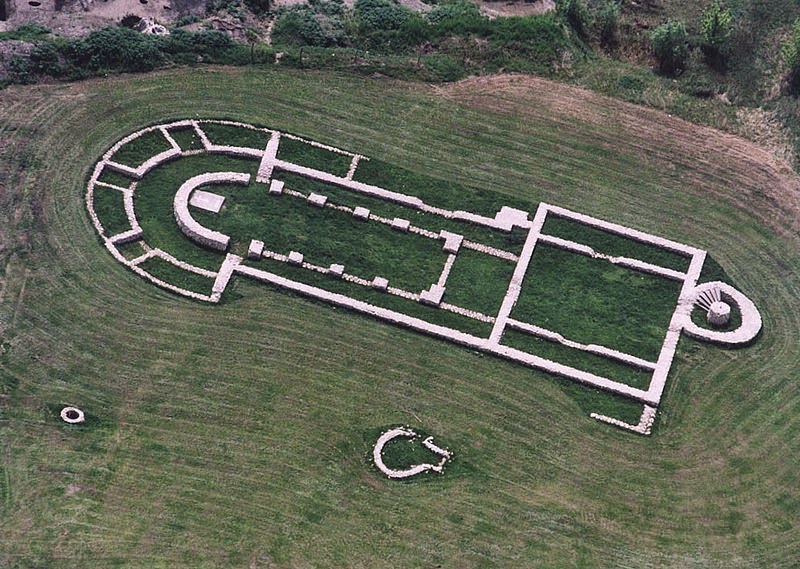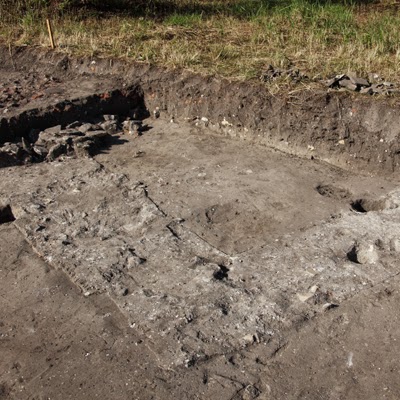Medieval History
You can find more aerial photos of the area on the website of Civertan.
More information about the history of Zalavár and its churches is available on the website of the Zalavár Historical Memorial Park.
Sz?ke Béla Miklós: Mosaburg / Zalavár a Karoling-korban. In: Paradisum Plantavit. Bencés monostorok a középkori Magyarországon. Ed. Imre Takács, Pannonhalma, 2001 (in Hungarian)
Sz?ke, B.M.: Christliche Denkmäler in Pannonien aus der Karolingerzeit. Zalai Múzeum 11 (2002) 247?266.
Sz?ke, B.M.: Karolingische Kirchenorganisation in Pannonien, in: U. von Freeden ? H. Friesinger ? E. Wamers (hrsg.): Glaube, Kult und Herrschaft. Phänomene des Religiösen im 1. Jahrtausend n. Chr. in Mittel- und Nordeuropa. Akten des 59. Internationalen Sachsensymposions und der Grudprobleme der frühgeschichtlichen Entwicklung im Mitteldonauraum. Römisch-Germanische Kommission, Frankfurt a.M. Eurasien-Abteilung, Berlin des Deutschen Archäologischen Instituts, Kolloquien zur Vor- und Frühgeschichte Bd. 12. Bonn 2009. 395?416.
- The Lost Medieval Church Of Bonyhád
It is rare that the excavation of a simple medieval parish church makes national news in Hungary. However, this is precisely what is happening these days with the remains of the medieval church of Bonyhád in southern Transdanubia: largely because...
- Medieval News In The Hungarian Press
I'm back from my vacation, and I am returning to blogging with a brief overview of news about medieval art and archaeology in the Hungarian press. Summer is naturally the chief season for archaeologists, so there are reports about various interesting...
- Earliest Christian Church Of Transylvania Found At Gyulafehérvár
Traces of the oldest church of TransylvaniaPhoto from www.kronika.ro New archaeological research near the Roman Catholic Cathedral of Gyulafehérvár (Alba Iulia, Romania, the seat of the bishopric of Transylvania) led to the discovery of the...
- Conquest-period Sabretache Plate Found At Hungarian Excavations
Sabretache plate excavated in Pest county Photo from Sírásók naplója blog A Hungarian archaeological blog (Sírásók naplója) reported on a recent lucky find in Pest county of Hungary. Last week, remains from the period of the Hungarian Conquest...
- Destruction Of The Centers Of Medieval Hungary
On August 29 1526, the army of Suleiman the Magnificent defeated the Hungarian army at Mohács. King Louis II died on the battlefield, and the sultan's army marched on to take the capital, Buda. At that time, the Turkish army withdrew - but in 1541,...
Medieval History
Remains of Carolingian palace found at Zalavár
 |
| The church of St. Hadrianus at Mosaburg/Zalavár (from Wikipedia) |
The area of Zalavár in western Hungary has long been one of the most interesting archaeological sites of medieval Hungary, especially for the Carolingian period. The area has been idetified with Mosaburg, where the Slavic prince Pribina established himself around 840, after he was expelled from Nyitra (Nitra, Slovakia). Lands in the area were granted to him by Louis the German. The first church there was dedicated by Liutprand, archishop of Salzburg in 850. Several other churches have also been documented there. In the late 9th century, Arnulf of Carinthia had his seat there, before he became Holy Roman Emperor at the end of his life. This late Carolingian flourished until the time of the Hungarian (Magyar) conquest of the Carpathian basin, including the area of Pannonia. Later, in 1019, King St. Stephen established a Benedictine abbey at Zalavár, and by the 12th century, a new castle was established there. The settlement - including the castle and the churches - became largely abandoned during the Ottoman Turkish occupation of Hungary, and after the reconquest, in 1702, the remaining buildings were torn down.
 |
| Carolingian glass fragments from Zalavár |
Archaeological excavations of the past decades, however, have brought many interesting remains to light. The sensation of the previous decade was the excavation of the third church of Mosaburg, the pilgrimage church dedicated to Saint Hadrianus, established in 855 (the conserved foundations walls of the church can be seen above). Several interesting finds, including fragments of stained glass windows were found here.
Reports from this summer's archaeological season indicate that the remains of a Carolingian stone palace have been found at the site of Mosaburg. As the online magazine m?emlékem.hu reports, archaeologists have found the corner of a large, rectangular stone building. Béla Miklós Sz?ke and Ágnes Ritoók, archaeologist in charge of the excavations identified the remains with the foundations of the palace of Arnulf, and thus date it to the last quarter of the 9th century (Arnulf died in 899, after becoming Holy Roman Emperor in 896. These are also the years of the Hungarian Conquest). Research still has to continue - it is hoped that by next summer, the full area of the Carolingian palace can be excavated.
 |
| Remains of a Carolingian building at Zalavár |
More information about the history of Zalavár and its churches is available on the website of the Zalavár Historical Memorial Park.
For more of the historical and ecclesiastical context, you may want to read the following studies:
Sz?ke Béla Miklós: Mosaburg / Zalavár a Karoling-korban. In: Paradisum Plantavit. Bencés monostorok a középkori Magyarországon. Ed. Imre Takács, Pannonhalma, 2001 (in Hungarian)
Sz?ke, B.M.: Christliche Denkmäler in Pannonien aus der Karolingerzeit. Zalai Múzeum 11 (2002) 247?266.
Sz?ke, B.M.: Karolingische Kirchenorganisation in Pannonien, in: U. von Freeden ? H. Friesinger ? E. Wamers (hrsg.): Glaube, Kult und Herrschaft. Phänomene des Religiösen im 1. Jahrtausend n. Chr. in Mittel- und Nordeuropa. Akten des 59. Internationalen Sachsensymposions und der Grudprobleme der frühgeschichtlichen Entwicklung im Mitteldonauraum. Römisch-Germanische Kommission, Frankfurt a.M. Eurasien-Abteilung, Berlin des Deutschen Archäologischen Instituts, Kolloquien zur Vor- und Frühgeschichte Bd. 12. Bonn 2009. 395?416.
- The Lost Medieval Church Of Bonyhád
It is rare that the excavation of a simple medieval parish church makes national news in Hungary. However, this is precisely what is happening these days with the remains of the medieval church of Bonyhád in southern Transdanubia: largely because...
- Medieval News In The Hungarian Press
I'm back from my vacation, and I am returning to blogging with a brief overview of news about medieval art and archaeology in the Hungarian press. Summer is naturally the chief season for archaeologists, so there are reports about various interesting...
- Earliest Christian Church Of Transylvania Found At Gyulafehérvár
Traces of the oldest church of TransylvaniaPhoto from www.kronika.ro New archaeological research near the Roman Catholic Cathedral of Gyulafehérvár (Alba Iulia, Romania, the seat of the bishopric of Transylvania) led to the discovery of the...
- Conquest-period Sabretache Plate Found At Hungarian Excavations
Sabretache plate excavated in Pest county Photo from Sírásók naplója blog A Hungarian archaeological blog (Sírásók naplója) reported on a recent lucky find in Pest county of Hungary. Last week, remains from the period of the Hungarian Conquest...
- Destruction Of The Centers Of Medieval Hungary
On August 29 1526, the army of Suleiman the Magnificent defeated the Hungarian army at Mohács. King Louis II died on the battlefield, and the sultan's army marched on to take the capital, Buda. At that time, the Turkish army withdrew - but in 1541,...
